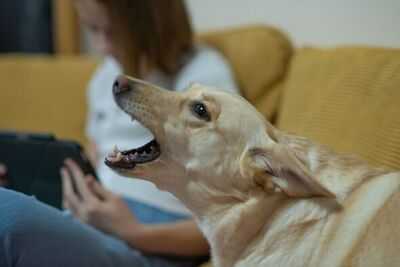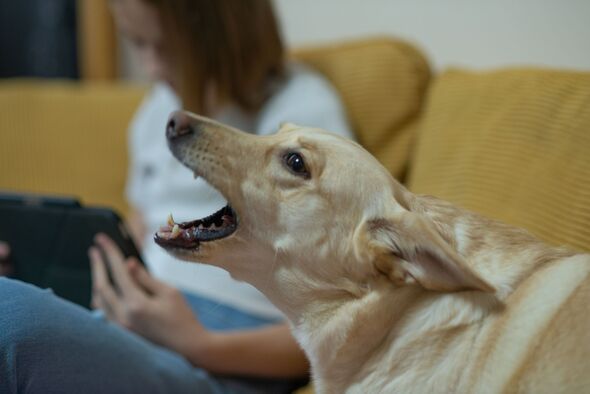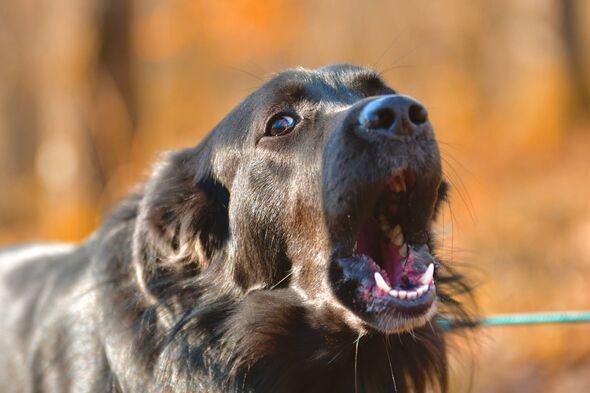

September could witness a nationwide surge in dog separation anxiety cases. Dog owners are bracing for a 'perfect storm' of factors as the school holidays draw to a close and office days ramp up, making it one of the most challenging months for our furry friends.
The school holidays have provided weeks of uninterrupted family time, with households spending more time than usual with their cherished dogs and deviating from regular routines. This, coupled with recent data revealing that nearly a third of employers are increasing their mandatory office days this year, could result in one of the most testing months for dogs suffering from separation anxiety.
As September looms and children head back to school, and adult owners are expected to spend extra days at work, dogs will face abrupt and dramatic changes to their daily routines, leading to a potential spike in separation anxiety issues. Separation anxiety in dogs can adversely impact their well-being, causing significant stress and panic that can harm both their physical and mental health.
This issue isn't the dog's fault; it's a genuine behavioural disorder marked by distress when the dog is left alone. This can lead to destructive behaviour, self-harm, excessive barking, and inappropriate elimination. It's crucial to seek early assistance from a veterinary behaviourist or a professional trainer to identify the root cause and devise a treatment plan.
Separation anxiety can be far more severe than ordinary fear or distress, often presenting as a panic attack and significantly impacting both the dog's wellbeing and the relationship between owner and pet, reports Wales Online. Veterinary group Medivet is encouraging owners to watch for the warning signs of separation anxiety in their animals.
Warning signs of separation anxiety in pets- Barking, whining or howling when left alone.
- Chewing or destroying furniture, walls, or belongings.
- Pacing around the home restlessly.
- Panting and heavy breathing with an increased heart rate.
- Accidents in the house.
- Clinginess and following owners around as they prepare to leave.
Whilst barking is perfectly normal behaviour, excessive and persistent barking or howling when a dog is left alone represents a key indicator of separation anxiety.

Dogs may discover that barking attracts attention from their owners, resulting in more frequent barking to express needs or secure a reward. It's vital to differentiate this from occasional barking, which might arise from boredom. To confirm separation anxiety, look for barking that starts soon after your departure, alongside other symptoms such as destructive behaviour, inappropriate toileting, or attempts to flee.
Dr Charlotte Jennings BVetMed MRCVS, Chief Veterinary and Partnerships Officer and dog owner, whose whippet, Hampi, experiences separation anxiety, explained: "Separation anxiety in dogs ultimately comes down to the fact that they miss you when you're not around."
She continued: "The back-to-school season is always a difficult time of year. Dogs get used to seeing owners more often for a prolonged period, before suddenly being left on their own more, as families return to their normal routines. My dog, Hampi, struggles with being left alone for too long, so I personally focus on getting her used to being left, little and often, to keep her as calm as possible and make the change in routine feel less severe."
To help owners prepare their pooch for the end of summer and the return to school and work life routine, Dr Jennings has shared some key guidance to follow.
1. Establish a time limit"Leaving your dog on its own at some point is an inevitable and necessary evil, especially when returning to work or school which sees pets away from their owners for longer durations. The crucial thing is to establish how long your dog can be left alone for."
The vet also said: "Some will be longer than others as it depends on the individual dog, but, on average, four hours for an adult dog is the maximum time we'd recommend, if possible, but this does vary from dog to dog.
"Once you know the limit, you can make arrangements to help break this up for your pet whilst you're out of the house, to avoid them being by themselves for too long. Arranging for friends, neighbours, or nearby family members to pop in, investing in a dog walker, or doggy daycare are all suitable options."
2. Identify the cause and manage your own behaviourDr Jennings emphasises the importance of distinguishing between separation anxiety and bad behaviour in dogs. She advises that during training, it's crucial to praise good behaviours rather than punishing bad ones, and remember that your dog primarily suffers from separation anxiety because they miss you.
"Dogs suffering from separation anxiety may exhibit negative behaviours, such as accidents, or chewing, so try and avoid responding in a way that will result in your dog feeling like it's disappointed you or is in trouble. A change of routine and boredom will also play a part. In a small number of cases, your dog may be in pain, so it's important to consider these factors when assessing their behaviour."
3. Create a safe and comfortable spaceCreating a safe and comfortable space for your dog is essential, according to Dr Jennings. If you leave your dog in a specific area of the house when you're away, ensure it's secure.
To prevent any chance of escape, all accessible windows and doors should be closed, and potential hazards, such as electrical wires, appliances, harmful foods and liquids, should be kept out of your dog's reach.
She added: "Be sure to give your dog access to water and food and toys to keep themselves entertained. Some dogs even like to have the TV or radio on as a distraction."
4. Ease into routineThe vet advised: "One of the biggest changes with the back-to-school season is your dog suddenly spending far more time on their own, so taking steps to make this less of a shock to the system is important. If you know you're going to be spending more time out of the house for a prolonged period, gradually increase the length of time your dog is left alone, to help them acclimatise over time."
5. Start them youngThe vet further explained: "To help prevent separation anxiety in dogs, it's helpful to start from when they are young. If you have a new puppy, start experimenting with leaving them on their own for short periods, and build it up gradually. This could start with putting them in a separate room while you're in, with access to toys and food, until they become settled with that, and build it up from there.
"Being consistent with your dog's surroundings and routine is vital, as is reinforcing and rewarding positive behaviour from the start, as this encourages repeat behaviour and will make things easier as they get older."
-
IIT JAM 2026 registration process begins at joaps.iitb.ac.in : Here is direct link, steps to apply & other details

-
Golden threads

-
Trump’s tariff rhetoric sets backdrop for India’s pharma confidence at iPHEX 2025

-
Weekly Numerology Horoscope (8th to 14th September, 2025): Week 37 of the Year, Vibrating with the Universal Number 1—A Week of New Beginnings, Courage, and Spiritual Clarity

-
GST relief on cars, but dealers stare at Rs 2,500 cr hit
